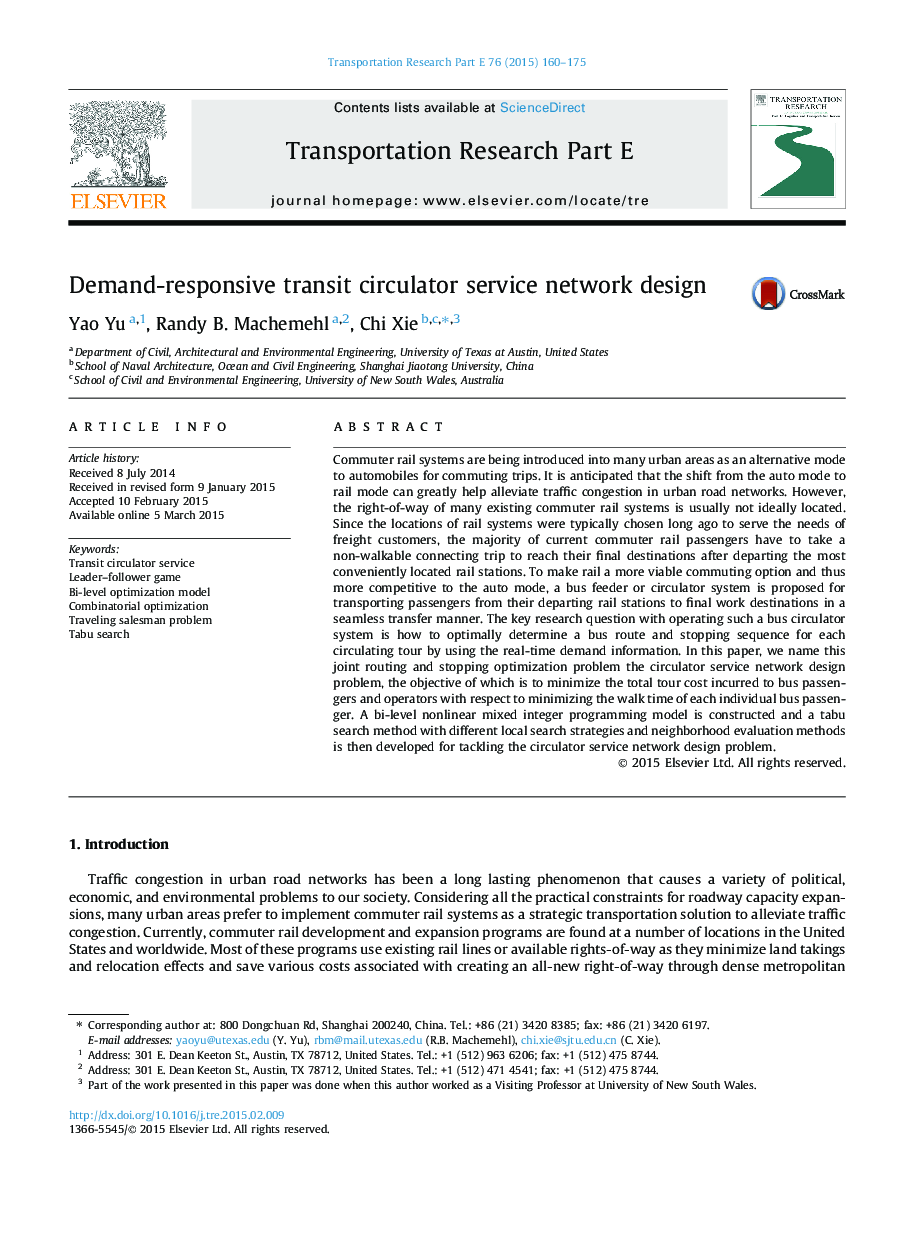| Article ID | Journal | Published Year | Pages | File Type |
|---|---|---|---|---|
| 1023185 | Transportation Research Part E: Logistics and Transportation Review | 2015 | 16 Pages |
•A transit circulator service network design problem that accommodates the objectives of bus operators and passengers.•A bi-level nonlinear mixed integer programming model consisting of one upper-level subproblem and multiple lower-level subproblems.•A set of adaptive tabu search procedures with different search strategies and neighborhood structures.•Numerical results justify the appealing solution quality and efficiency and reveal the importance of demand information availability to the solution quality.
Commuter rail systems are being introduced into many urban areas as an alternative mode to automobiles for commuting trips. It is anticipated that the shift from the auto mode to rail mode can greatly help alleviate traffic congestion in urban road networks. However, the right-of-way of many existing commuter rail systems is usually not ideally located. Since the locations of rail systems were typically chosen long ago to serve the needs of freight customers, the majority of current commuter rail passengers have to take a non-walkable connecting trip to reach their final destinations after departing the most conveniently located rail stations. To make rail a more viable commuting option and thus more competitive to the auto mode, a bus feeder or circulator system is proposed for transporting passengers from their departing rail stations to final work destinations in a seamless transfer manner. The key research question with operating such a bus circulator system is how to optimally determine a bus route and stopping sequence for each circulating tour by using the real-time demand information. In this paper, we name this joint routing and stopping optimization problem the circulator service network design problem, the objective of which is to minimize the total tour cost incurred to bus passengers and operators with respect to minimizing the walk time of each individual bus passenger. A bi-level nonlinear mixed integer programming model is constructed and a tabu search method with different local search strategies and neighborhood evaluation methods is then developed for tackling the circulator service network design problem.
